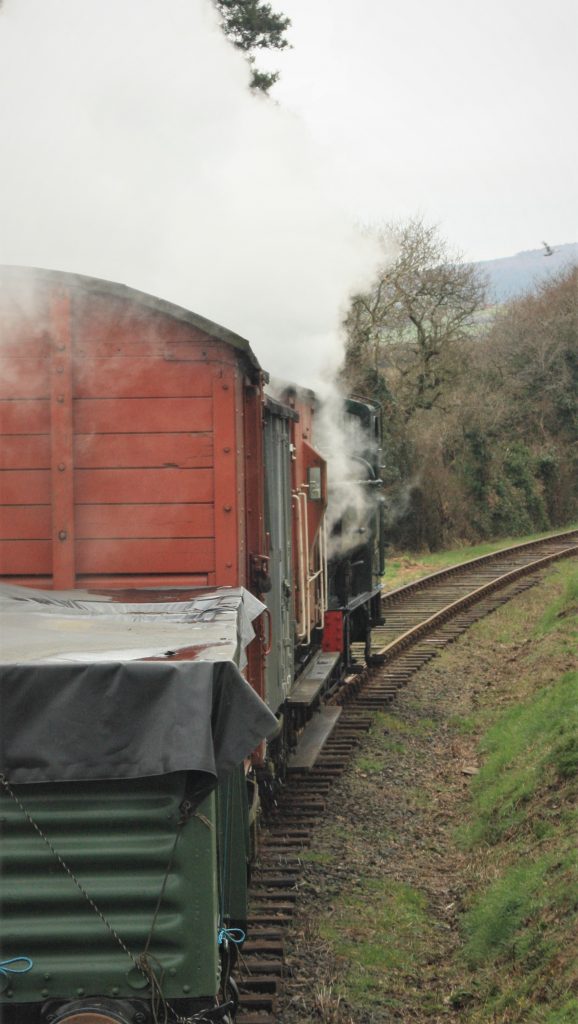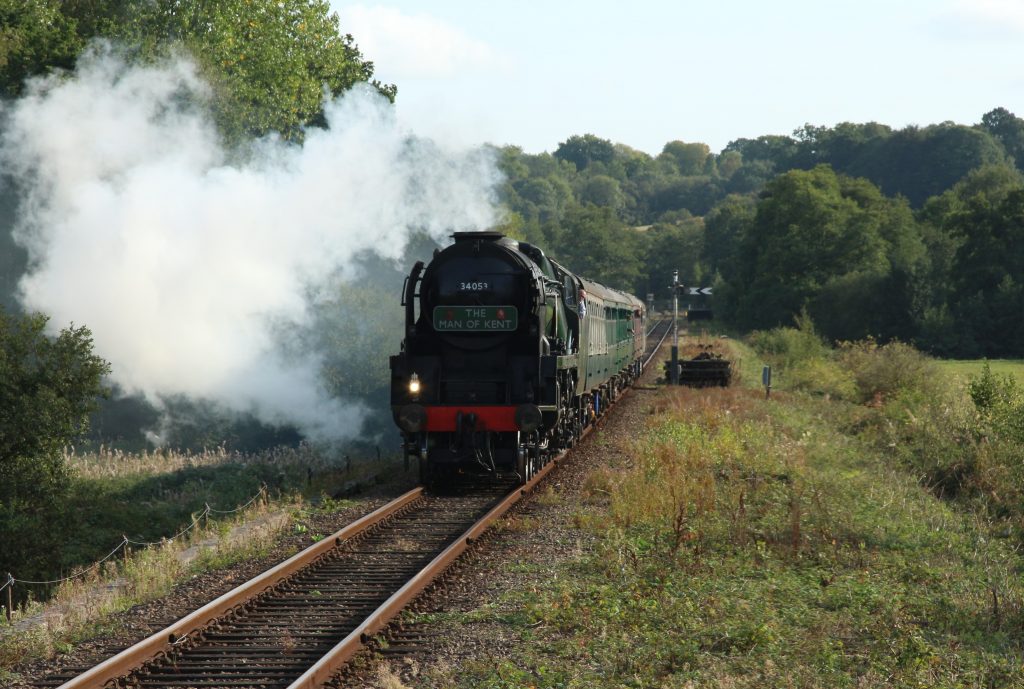Train operators have had a hard time during covid – open access operators even more so. but what about the heritage railways?
It is almost cliched to say that the COVID-19 outbreak has drastically changed the world in which we live in, but it is unfortunately true. Every single one of the 217 heritage railways in Britain has been impacted in a different ways, but, for most, both long- and short-term financial damage has been done.
As events rapidly unfolded in mid-March, it became increasingly clear that operating heritage railways as leisure attractions would be impossible under the lockdown. March is typically the time of year when heritage railways begin to open to the public at weekends, after spending large sums on infrastructure works over the winter shutdown period.
Just like the mainline railways, the costs of maintaining and operating a heritage railway are high and trying to turn a profit is a delicate tightrope to walk at the best of times. So, to be faced with little or no income for an indefinite time was, and for many railways still is, a terrifying position to be in.

& Wenford Railway in 2013.
Heritage Railways generally fell through the cracks of government schemes to help businesses, often being ‘too big’, ‘too small’ or with complications around their charity or society status meaning they were not eligible for support.
In some cases, local authorities have been able to contribute with grants due to the value the railways add to the local economy, but this has not been the case everywhere. The furlough scheme, however, did go a long way in helping out the larger heritage railways who have full or part time staff, drastically reducing the monthly overheads.
With nowhere else to turn, survival appeals were launched, seeking donations from supporters and the general public in order to survive. In many cases, these appeals asked for, and raised, six figure sums.
That may sound like a large pot of money to save a railway, but, in reality, that money quickly disappears, swallowed up by fixed costs such as the annual insurance bill, which can typically be tens of thousands of pounds.
On 11 May, the Office of Rail and Road (ORR) instructed heritage railways to form a ‘COVID-19 Recovery Plan’ to steer each railway through the reopening process safely with a robust risk assessment. Guidance was issued on a wide range of maintenance and operational factors to consider when re-opening a railway. Rolling stock, track, bridges, embankments and signalling all needed to be inspected to ensure they were in a suitable condition for the running of trains again.
Volunteer staff competency and familiarity lapses with time, competency for many operational roles expires after six months. So, with some railways having their last operating days in December, volunteer competency was lapsing by June. To combat these issues, the ORR recommended railways undertake ‘Shakedown Running’, with no passengers, to familiarise volunteers with running trains safely.
In terms of COVID-19 itself, heritage railways pose some unique challenges. Two-metre social distancing is challenging to achieve in an open carriage, reducing capacity to as little as 25 per cent. On narrow gauge railways, where the carriages are smaller and passengers sit closer together, the problem is amplified. Most railways cannot turn a profit with trains only 25 per cent full.


The revised 1m+ rules, which came into force later on, helped matters, as passengers were now able to sit closer together, providing that they are wearing masks or with the aid of plastic dividing screens between seats.
History accidentally helped the Isle of Wight Steam Railway with this problem. Non-corridor coaches with compartments make up the majority of the island’s coaching stock, meaning that the railway has been able to book one family group per compartment and carry closer to the normal number of passengers.
Whilst all heritage railways have been impacted in some way or another, the stories of the Bodmin and Wenford Railway and the Keighley and Worth Valley railways are worth exploring in greater detail.
The Bodmin and Wenford Railway
Climbing through the countryside of central Cornwall, the Bodmin and Wenford Railway runs along two steeply graded branch lines from Bodmin General station. The first of these is to Boscarne Junction, ideal for exploring the ‘Camel Trail’ along the disused line to Wadebridge and Padstow, the other is to Bodmin Parkway, which is served by GWR mainline trains.
The railway decided not to open at all in 2020, due to a combination of factors that made it incredibly difficult to open the railway safely.
Over winter and spring this year, the Bodmin and Wenford had an intensive plan to catch up on a backlog of locomotive and carriage maintenance that had built up over the past few years. Being forced to down tools in March meant that the rolling stock to run the railway was simply not ready to roll.
The railway usually thrives off the Cornish tourist industry and is blessed by being one of the only indoor attractions in the area suitable for a rainy day, when families don’t really want to sit on the beach! On a sunny day, the railway is often comparatively quiet. With a general reluctance to visit indoor attractions during a pandemic, it was feared that those sunny days may be even quieter.
The delightful branch-line nature of the railway poses unique capacity challenges. The railway has steep gradients and short run around loops, meaning that trains can only be four coaches long, to add more coaches like other railways have is not an option. Bodmin General, the hub of the railway, has a narrow platform, limited cover from the rain and constricted indoor spaces. On a rainy day, when the railway is busiest, crowds form under the available shelter and there is no suitable location for a queuing system.


The vast majority of the volunteers at the railway live in Cornwall and come from older generations. They were surveyed on their willingness to volunteer given the circumstances, with the majority saying that, while they would love to, they felt that they could not do it safely.
There are now 13 full time staff at Bodmin, down from 20 at the start of the year, who have their hands full catching up on maintenance and administrating the railway, so cannot run the service on their own.
The decision to stay closed was not taken lightly, but the railway is looking to the future. It is hoped that there will be an opening to the public at Christmas in some form, even if this doesn’t involve the running of trains themselves.
KWVR
The Keighley and Worth Valley Railway climbs through the hills of West Yorkshire from Keighley to Oxenhope and was one of the earlier preserved railways in Britain, reopening in 1968.
Just south of Ingrow, the railway crosses the river Worth at bridge 11. The bridge was upgraded from a wooden tressle type in 1904 to the current arrangement with iron girders and stone abutments and central pier and has carried trains ever since. In 2018 it became apparent that the bridge needed to be renewed and, after much design work and preparation, the challenging job was planned to take place between Monday 16 March and Friday 1 April this year.
By mid-March, the pandemic was looming, but, with the country largely carrying on as normal, the work began. Higher risk volunteers were asked to stay at home, but nonetheless the remaining core workforce of volunteers and contractors made good progress. By Wednesday 18 March, most of the old bridge had been removed and work began on the new installation.
On the evening of Monday 23 March, the Prime Minister announced the lockdown. At this point, Bridge 11 was in a half-completed state – four out of eight new concrete beams were in place, with the remaining four planned to be installed the following day. Instead of fitting those beams, the first day of lockdown was spent trying to make the worksite safe, with no idea of when work may be able to resume. The railway was split in two, meaning locomotives trapped on the wrong side of the bridge couldn’t return to their base at Haworth shed.
It was at this point in the crisis that the railway was approached by Northern Rail, which needed to find a location to store its entire fleet of class 144 ‘Pacer’ multiple units. The Keighley and Worth Valley Railway is connected to the mainline just north of Keighley station, so it could bring the units in and had enough space available in its station to store all of the units.
A deal was struck which was mutually beneficial to Northern and KWVR and the units soon came rolling in, usually at the controls of Northern drivers who volunteered at the KWVR so ‘signed’ the route!
Regular security patrols took place, to keep the units safe during their storage, and the units were regularly started up to keep them ready to return to service when required. One of the units which was stored at Keighley, 144011, has now been preserved to run up and down the Worth Valley for many years to come.
Volunteers were allowed back to resume works on bridge 11 in a limited way in June. Without the aid of a £50,000 Heritage Lottery Fund Grant, the railway would not have been able to complete the bridge as significant additional costs had been incurred. For example, the hired in scaffolding on site was expected to be in place for three weeks, but ended up being retained for months. The railway had also lost all of its revenue for the first half of its season putting a major dent in the railway’s finances.

worked on the line since the 1960s.
When it came to installing the final four concrete beams in June, the Bahamas Locomotive Society’s steam crane needed to be carefully returned to site. Steam cranes are some of the heaviest rail vehicles in Britain, so, to position it safely on one side of bridge 11, the crane had to descend the downhill gradient at less than walking pace to reduce the risk of an overrun at the site.
The bridge was successfully completed and the possession handed back on 31 July, to allow the railway to begin shakedown trains in preparation for opening to the public in mid-August. By this point, most of the class 144s had returned to Northern or the leasing company but a handful still remain at Keighley at the time of writing.
A Cautious Future?
As winter approaches, the future of heritage railways still hangs in the balance. Some railways are hopeful to generate some revenue over Christmas with the usually lucrative ‘Santa Specials’, but there is a risk that any further restrictions could jeopardise these events. From January the winter shutdown period looms. Let’s hope for a better year for railway heritage in 2021!
With thanks to James Barlow, Noel Hartley and David Nelson-Brown for their help in putting this article together.

